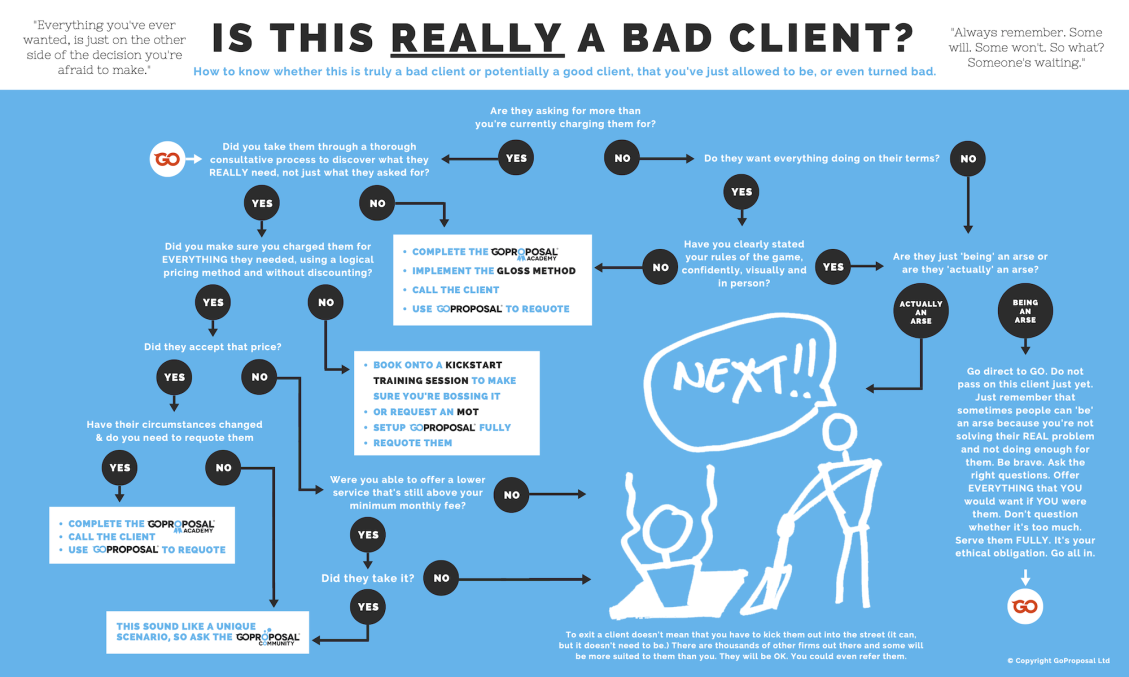How to turn a tough client into an ideal one
It’s easy to fall into the trap of the ‘more clients = more success’ mentality.

But that’s not always the case. In fact, more clients bring more work, and often, more headaches. Especially when you have particularly difficult clients.
James Ashford from GoProposal doesn’t believe that difficult clients (or great clients) land on your doorstep—rather, they’re a product of enablement. If you enable certain behaviour—good or bad—you will notice the results.
Great clients don’t just exist; they’re not found... they’re created.
But what is a difficult client? What separates great clients from tough ones?
What defines a difficult client?
These are the clients that, when it comes down to it, make your job more difficult than it should be.
You might recognize the following characteristics in some of your clients:
The constant need to chase them for information and responses
Consistent complaining
Late payment
Changes to project parameters after signing contracts
Expectations that you will do work for free
Recommended reading: Learn to say no: how to avoid the clients not worth the hassle
So, how do you turn tough clients into ideal ones? Well, it starts with setting expectations.
Set expectations from the beginning
If you allow a prospect to control your first client call, and that call extends over the allocated time, you’re immediately sending them a message that says:
Your time is not valuable.
They dictate your relationship.
On the other hand, if you’re in the driver’s seat, this first call is where you set your agenda, pace and expectations for the meeting, and the entire relationship moving forward.
This is the chance where you help them to understand:
Their responsibilities and the role they play
The value you can bring
The tasks you don’t perform
Timelines
Project scope
Pricing
By being clear with what you expect from them, and what they should expect from you, you ensure you’re working on a level playing field with no barriers or obstructions.
You need to understand them
In order for you to set accurate, realistic and reasonable expectations, you need to understand your clients. Take the time to learn:
Their current situation
Their pain points
Why they need your services (not just why they want them)
Their goals
Without this information, the expectations you set will be simple guesswork.
They need to understand you
During this process, it’s critical that your clients and prospects understand the value you can bring them. They need to be confident in, and trust, your ability to execute.
You're not selling accountancy services, you’re selling certainty. The moment prospects get certainty, their excuses melt away.
Be clear about what you can do for them and the value you can bring.
Have you done all you can?
If you’re dealing with an existing difficult client, have you done all you can to set expectations, sell certainty, price correctly, etc.?
You can use this flowchart (click to expand) from GoProposal to understand if you have done all you can to work with this client, or if it’s time to exit them from your roster.

“This diagram is deliberately designed to make you accept responsibility for how you’re creating these tough clients,” explains James.
Honest, open communication
Setting expectations and understanding value is nearly impossible without clear communication.
Communicate with clarity and with intent.
Set expectations and sell certainty from day one, and you will immediately notice the difference in your clients’ behavior.